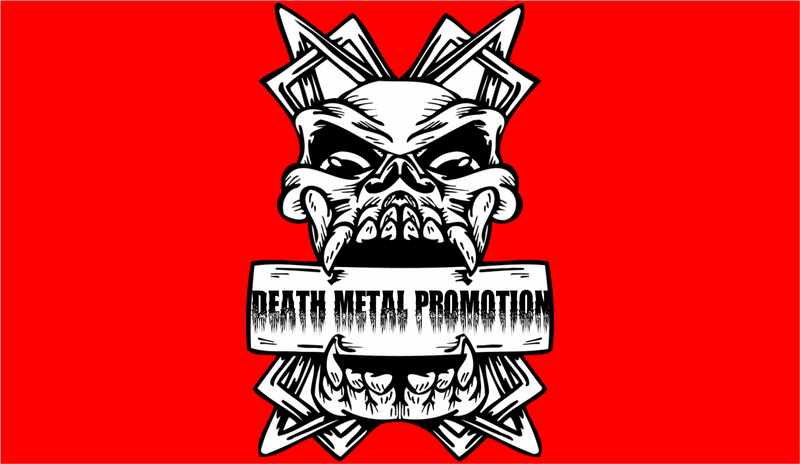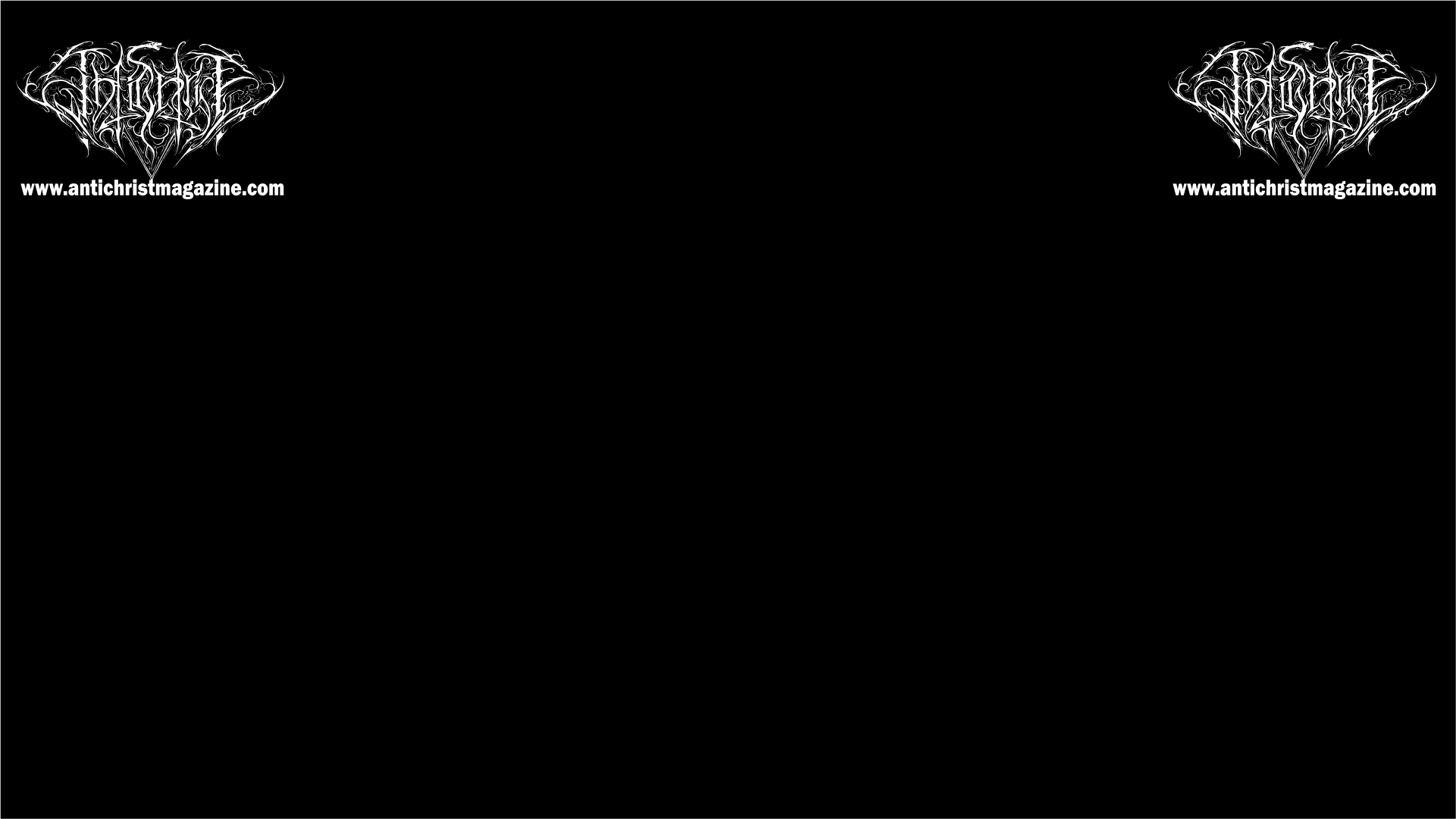 Hi guys! Your music is described as combining heathenry, Scandinavian mythology, and devotion to the dark. How do you go about incorporating these themes into your music, and what draws you to these particular themes?
Hi guys! Your music is described as combining heathenry, Scandinavian mythology, and devotion to the dark. How do you go about incorporating these themes into your music, and what draws you to these particular themes?
Hails. We’ve both been interested in these topics for a long time so it came naturally to include these in our music. Also, the riffs that J.L composed were already sounding epic and powerful so it was a clear choice from the beginning on what kind of direction this band would take. More closely we’ve been interested in our history and Scandinavian Mythology. Thus heathenry and of course Finnish Mythology, besides Germanic paganism etc. since we were young. We are interested in their philosophy of life and the mindset that our ancestors had and also the darker aspects of their beliefs and spirituality. What could be a better channel for our aspects and visions from it than this kind of black metal?
Your debut album, “Woven Dark Paths,” is described as delving into “dark ancient rites, bloodletting for the forefathers, and true Nordic spirit.” Can you tell us more about the themes and concepts explored in the album, and how you approached creating a cohesive narrative throughout the album?
Well, it is too narrowminded to describe it with only those words. It is easier to explain the ”narrative” or ”common thread” of the album by opening up the songs one by one. The intro ”Rite Of Transcendence” (which was actually composed, played, and recorded by our friend Jarkko Neuvonen with his D.I.Y Nordic and other ethnic instruments) is depicting a rite that a shaman is conducting for preparing himself for his journey and it gets more and more intense towards the end and works as a gateway to the second song ”The Scryer Of Bones” where the scryer is of course the shaman. The song is about his withdrawal amongst people to a sacred place to conduct a dark rite, to scry from the bones of the fallen, and heed the omens provided by his spiritual journey. At the end of the song, his apocalyptic visions are proclaimed upon all mankind.
The third song ”Of Bloodlust & Nightside Sorceries” is a song about an ancient rite of sacrifice and veneration of the ancestors and gods. It is highly likely that there has been human sacrifice in ancient Scandinavia. Some archeological finds suggest evidence of this. Although not a common practice, it was supposedly practiced during times of war. Thus the idea to make a song from it came to our minds and in the song’s narrative, the seer conducts a ritual, and a thrall is sacrificed for the luck and favor of gods for the coming battles. The middle part of the song is about awakening the inner beast within oneself and connection to the land and the ancestors. The last part of the song is about gathering strength for the warpath the warriors are set on. The cover art is also based on this song.
The fourth song ”Embers Of Pagan Fire” is actually a kind of exception since it is inspired by a letter that Pope Gregorius IX sent to an archbishop of Uppsala in 1237. It is about his concern about an insurrection of Finnish Tavastian pagans who had been returning to their old ways and destroyed a Catholic Church in Häme (Tavastia), Finland. Although this is seen as Christian propaganda the content of the letter inspired us. According to it the vengeance of the pagans for Christians defiling their sacred groves and land was fierce and the atrocities they did to the priests and people were cruel and brutal. There’s also a notion about punishment from ancient Germania. Where the ones that defiled the sacred groves and trees had their navels nailed to the trunks and then forced to run around until their guts and flesh replaced the bark of the defiled trees. A life for a life kind of sacrifice. So it is also a song about rousing the embers of pagan fire in their hearts and taking back what was taken from them.
The fifth song and the title track ”Woven Dark Paths” is about the Norns. They are entities that weave the fates of men and even the gods in Norse mythology. It can be seen as foreboding visions of war and desolation and scouring the dark paths that men must tread. The song sounded powerful even in the demoing stage and was one of the easier songs to compose. It has this deep feeling of despair and melancholy in it and it reflects the overall feel of the album very well so we decided to name the whole album after it.
The sixth song ”The Austerity Of The Northern Lands” is a hymn for Nordic nature and its harsh weather, cold nights, and its mountains and fjelds. It actually features some real-life experiences in it and deeply reflects our connection to nature and its essence. The season of Lowyatar or Louhi which is a daughter of Tuoni the god of death in Finnish Mythology represents the winter and at the end, there’s another notion of Skadi (a jötun or goddess in Norse Mythology) which in this concept represents the mountains and the feeling of longing for them. So the song can also be seen as a journey of the shaman and at the start he feels the winter is closing in and wanders over the fjelds following his longing for the mountains and venerating their austerity and adamant constancy. The song was originally meant to be the last song of the album but was soon changed to be the sixth song.
The seventh song ”Soaring Over The Battlefields” is about the raven of Odin, Muninn which means memory, soaring over a battlefield where Christians and pagans clashed and the despair of the Christians when facing the cruel and cold north. It was clear from the beginning that this song had to have an aggressive narration in it because it is the fastest and one of the most aggressive songs on the album. At the end climax of the song, Muninn returns to Odin with his memories and tales of the battle.
The eighth and final song ”The Great Winter” is a grand epic about the Fimbulwinter. An exceptionally long and harsh winter from Norse mythology that precedes the end of the world and all life. What inspired us to write a song from this classic concept is that according to historians and archeologists, there has been a time of great strife and darkness in 536-539 CE when some cataclysmic event (probably a series of volcanic eruptions in Iceland happened) and it plunged a big part of the world to darkness and bred famine and unrest in wide parts of Europe, Scandinavia, Middle-East and even Asia. This event intrigued us because there have been some theories that the stories of the mythological events of Fimbulwinter and Ragnarök are based on this. Following this event was the start of the bubonic plague in Egypt which was to be called the Justinian Plague. It wiped out approximately 30-50 million people, which was about half the world’s population at that time. So times were really rough back then and in our opinion, this is certainly a fit theme to conclude a black metal album
How does your spiritual practice as a heathen inform your understanding of the interconnectedness of all things?
Both of us are deeply connected to these roots and we are ever-learning and seeking to understand their profound meanings and philosophy. Our ancestors had a really deep connection to nature, one that most modern people have lost. It is venerable for us to ruminate on these kinds of things and express them through our art.
How does your music reflect your personal connection to and reverence for the natural world?
As we said in the earlier question, our connection to nature and especially to its dark essence is reflected in our music very well. There is some dark esoteric energy in the vibration of nature, the essence of which one wants to learn, understand, and use. We keep coming back to it again and again. It is a force of nature that you can call divine and its testimony is overwhelmingly powerful. Both making this music and studying these matters have taught us a lot along the way and have formed a kind of lifeline for both of us.
You’ve cited bands like Isvind, Perished, Mithotyn, Kampfar, and Thyrfing as influences. How have these bands influenced your music, and how do you strive to differentiate yourselves from these influences?
Actually, we are not influenced by these bands, we were compared to them. Which is in our opinion a bit strange. Actually, we had not even heard of two of them before. Well yes, you can find the same elements in the lyrics and the music too especially with Isvind and Perished. But we think that our music has our Finnish grasp in it. There are a couple of classical Scandinavian black metal-influenced riffs of course, but they came and were made without thinking it too much and with an attitude that if it works and fits with all the other stuff and their feel then let’s use it. We also consciously avoid using synths in our music and keep the melodies even from time to time very epic also dark, cold, and sometimes with hopeless longing. So in our songs, you won’t be hearing any merry mead-drinking themes that’s for sure.
Your style is described as “mostly melodic and epic, yet crushing and furious.” How do you balance these different elements in your music, and what do you think makes your sound unique?
We’ve always liked these strong and powerful but dark melodies (the ones that give you goosebumps) and feel in black metal and fit them in between simpler riffs to create these grim and cold narratives. Of course, the drums and their sound play a big role so the drone-like blast beats, grooves, and thundering double bass and fills with moderate spicing here and there is what we prefer. We also gave room for improvisation in some parts of the drums when we were recording, so it would feel more lively. Then also the vocals and various changes in its style add their own flavor of madness and hatred to this decoction. The mixing and mastering of course play one of the bigger roles also in this and as for the EP, we wanted this album to have this same kind of power and ruthlessness in it. We do not know about uniqueness but our sound has a bit of this old-school rawness in it with a modern touch and it seems to serve well for the music. Maybe in the future, we will do it differently. It depends on the feel and the atmosphere of the songs what kind of approach we will take.
You’ve recently signed a worldwide record deal with Soulseller Records. Can you tell us more about how that came about, and what the process of working with a record label has been like for you?
We were contacted by a few labels back in 2020 when we promoted the EP by ourselves. We saw that Soulseller Records fitted the best for us and the co-operation with them has gone pretty smoothly. We thank them for this opportunity to spread our art around the globe.
Your EP “Of Atavistic Fury & Visions” was released in December 2020 to positive reviews. How do you feel about the reception to that release, and how did it influence the writing and recording process for “Woven Dark Paths?”
Yes, it was a bit of a surprise for us that it received such good reviews. We of course wanted to do a stronger and more immersive album after the EP and wanted the style to remain pretty much the same. So we immediately started to work on the songs of ”Woven Dark Paths” and a few of them were finished pretty quickly, some took more time. Some of the ideas were almost ready at the start of the work process and some were developed during composing. Deciding the order of the songs was a bit hard at the start but the big picture was formed after about half of the songs were done and some demos were still in the making. The ”common thread” of the album was finalized about half a year before recording but the last tweaks and changes of some songs were done almost at the last minute before entering the studio.
How do you create that sense of timelessness in your music, and what draws you to that particular aesthetic?
It is created by careful structuring and selection of riffs that have the right feel to them. It is hard to explain it otherwise. For what draws us to this particular aesthetic is that we are of course inspired by many of the second-wave black metal bands so our music has this nostalgic ’90s black metal vibe in it. It feels easy to compose because it comes from us naturally and epitomizes both of our ideas perfectly.
How do your geographic and cultural backgrounds influence your music, and what do you think sets Finnish black metal apart from black metal from other regions?
It is clear that it influences and inspires us very much. As we said earlier we’ve been interested in our mythologies and history for a long time, but of course the cold and harsh climate of the north and its nature inspires us a lot too. Finnish black metal has always had its unique feel and it is noticed by especially the people abroad. Its feel just reflects the attitude and aspects of its makers very efficiently. Maybe that’s the thing that makes it so recognizable.
In what ways do the myths and legends of Scandinavia reflect the cultural values and beliefs of its people?
A hard question. We feel that most people have lost the connection to these things a long time ago. It is of course a coincidence of many things but a huge part of this is because of the Abrahamic religion more so Christianity which affected it in our opinion. We personally do not know many people that are interested in these topics. There are some remnants of the old ways in literature and of course, some of it is taught in schools but they have been mostly abandoned or erased from everyday life at least for most people. Which is a shame of course.
How do you think the use of the Finnish language enhances the music, and what do you hope listeners who don’t speak Finnish can take away from your music?
Well, only our name is actually Finnish. The lyrics are in English. We’ve thought of making a song in Finnish at some point but didn’t want to include it on this album. We think that it does not take away anything from people abroad. You can always translate your lyrics and from what we’ve seen and heard the people abroad like the Finnish language.
What comes first – the lyrics, the music, or a specific concept or theme?
We think it is the combination of all of those that matter the most. Lyrics and music play the main role of course and if the lyrics fit well with the music and even better if it fits well as a part of interesting concepts or whole theme it offers the best experience.
What are your thoughts on the role of Satan as a symbol of individualism and rebellion against societal norms?
We see Satan as a symbol of freedom and through this the power that drives you on your individual path, but of course as a symbol of rebellion also. A symbol of rebellion against the Abrahamic plague and certain values and dogmas of any institutionalized religion and the whole society. Satan also represents the inner beast in us and the destructive powers of nature. The untamed will of any living thing, which at least the Abrahamic religions try to subdue.
How do you reconcile a misanthropic worldview with the desire to connect with others through your music?
If it would be possible at this point we both would be living in seclusion in some separate forlorn places in lonesome cabins far away from civilization. We do not see modern society as really a good thing and sometimes it feels like just a big burden on your shoulders. Thus we are not as much interested in what people think about our art. Of course, it is encouraging to hear good reviews and such but all in all we just have this urge that this music just has to be done, because it is the experiences and the deep expressions and ideas that need to come out in some way and we cannot think a better way than this.
What are your plans for the future, both in terms of new music and live performances? Thank you!
The short-term goals are making live performance possible and it is well on its way. We are thus interested in any gig requests and contacts from booking agencies. The long-term goals are to start making new music and some ideas are already in the forge and of course, bringing our music to the stages asap. Thank you for this interview!
https://www.facebook.com/sarvekas
If you really would like to support Antichrist, you can just Share our article.
You can also support Antichrist by sending a couple bucks to cover some webhosting expenses. =>> PayPal



